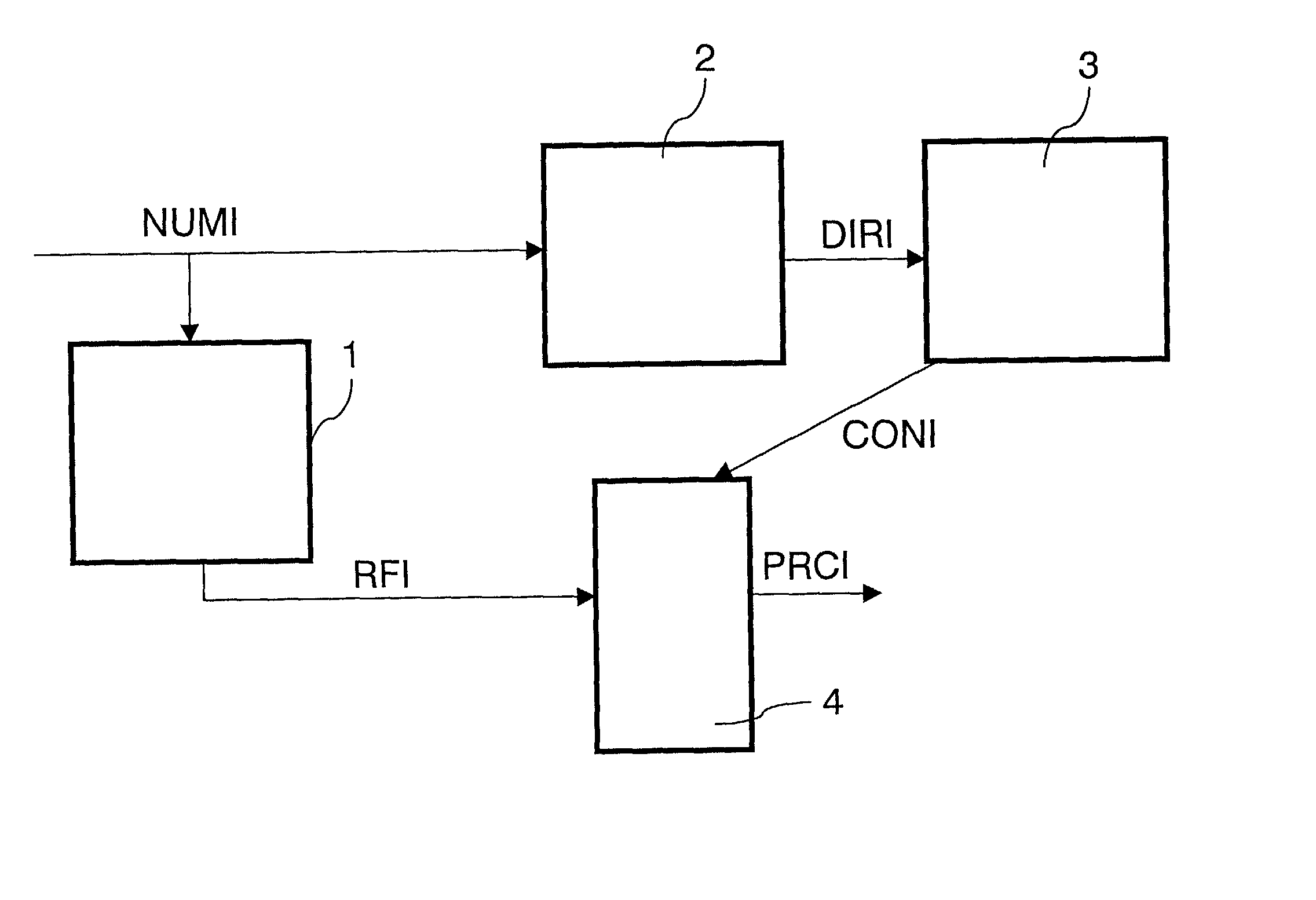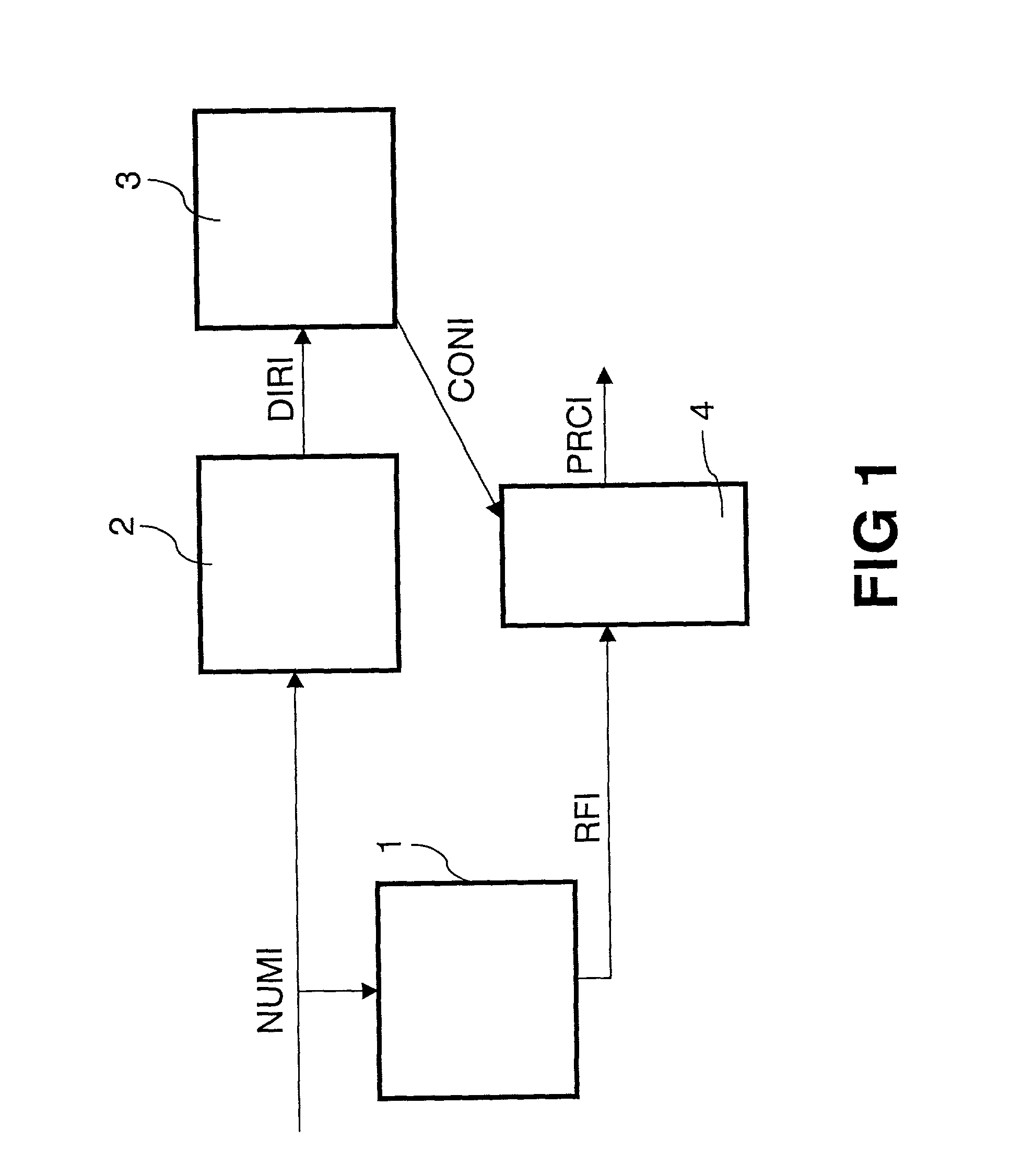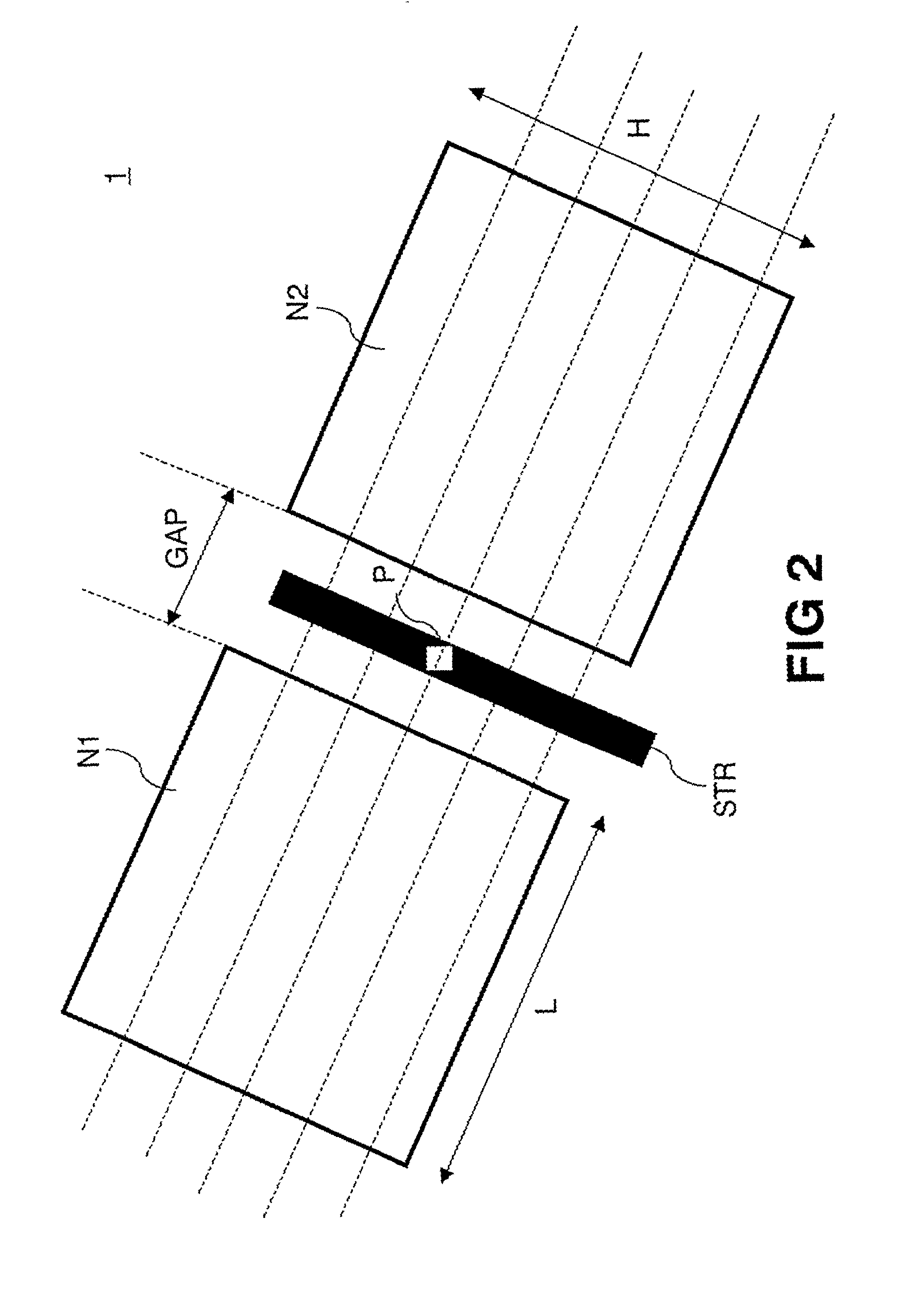Method of processing images
a processing method and image technology, applied in the field of processing images, can solve the problems of difficult selection of interesting curvilinear structures in images, and the inability to allow a good selection
- Summary
- Abstract
- Description
- Claims
- Application Information
AI Technical Summary
Benefits of technology
Problems solved by technology
Method used
Image
Examples
Embodiment Construction
[0022] FIG. 1 is a block diagram illustrating the characteristic features of the invention. A method of processing images comprises a step of filtering realized by a filter 1, a sub-step of estimating the direction of each pixel of the image, realized by a direction estimation device 2, a sub-step of analyzing the connectivity of neighboring pixels, realized by a connectivity analysis device 3 and a sub-step of selecting groups of pixels, realized by a selection device 4.
[0023] A digitized image NUMI is applied to the filter 1. A filtered image RFI is obtained in which a large part of the curvilinear structures of the digitized image NUMI is selected. In parallel, the digitized image NUMI is applied to the direction estimation device 2. A direction image DIRI is obtained, which comprises a set of angular sector numbers corresponding to the directions of all the pixels of the digitized image NUMI. The connectivity analysis device 3 has the direction image DIRI as input. The operation...
PUM
 Login to View More
Login to View More Abstract
Description
Claims
Application Information
 Login to View More
Login to View More - R&D
- Intellectual Property
- Life Sciences
- Materials
- Tech Scout
- Unparalleled Data Quality
- Higher Quality Content
- 60% Fewer Hallucinations
Browse by: Latest US Patents, China's latest patents, Technical Efficacy Thesaurus, Application Domain, Technology Topic, Popular Technical Reports.
© 2025 PatSnap. All rights reserved.Legal|Privacy policy|Modern Slavery Act Transparency Statement|Sitemap|About US| Contact US: help@patsnap.com



